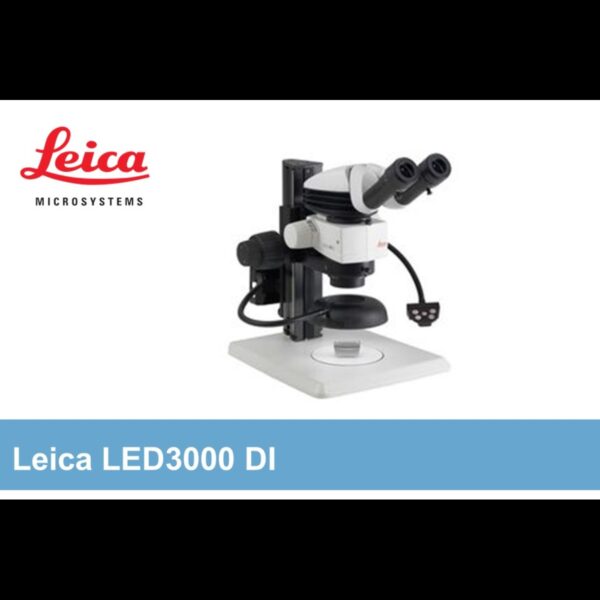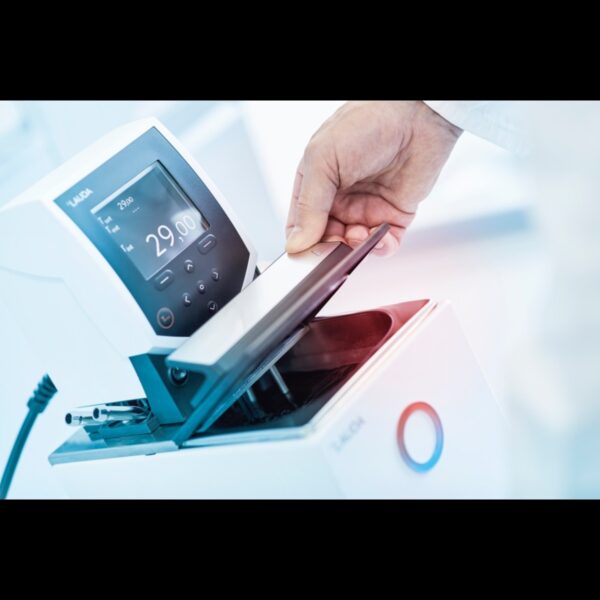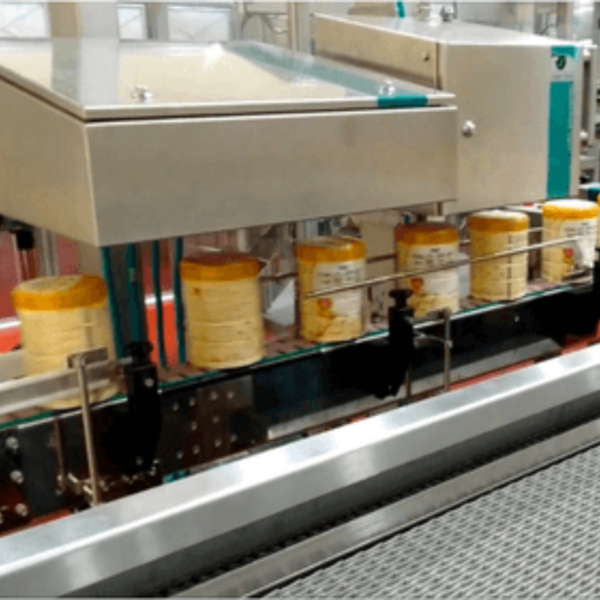Leica – Stereo Microscopes – LED Illumination
LED illumination from Leica Microsystems provides cool, natural color light for a various incident light applications. LED technology also consumes lower power and lasts longer compared to halogen lamps saving energy and money. Whether you are looking for uniform, high-contrast, coaxial, highly diffuse, or nearly shadow-free illumination, Leica Microsystems provides a broad spectrum of LED illuminators for your application or task.
Technical Specifications
LED3000 series
| LED3000 RL | LED3000 SLI | LED3000 NVI | LED3000 MCI | LED3000 DI | LED3000 BLI | |
|---|---|---|---|---|---|---|
| Number of LEDs | 24 | 2 | 2 | 4 | 36 | 36 |
| LED service life | 50,000 h | 50,000 h | 50,000 h | 50,000 h | 30,000 h | 30,000 h |
| Color temperature | 5,600 K | 5,600 K | 5,600 K | 5,700 K | 6,000 K | 6,000 K |
| Objective diameter | 58 mm | – | 58 mm | – | 58 mm | – |
| Recommended working distance | 60 – 150 mm | – | 60 – 150 mm | – | – | – |
| CTL2 / CAN terminals | 1 | 2 | 1 | 1 | 2 | 1 |
| Compatible with Leica FusionOptics™ | – | ✔ | – | ✔ | – | ✔ |
| Power consumption | 15 watts | 5 watts | 10 watts | 10 watts | 10 watts | 10 watts |
LED5000 series
| LED5000 RL | LED5000 SLI | LED5000 NVI | LED5000 CXI | LED5000 MCI | LED5000 HDI | |
|---|---|---|---|---|---|---|
| Number of LEDs | 40 | 2 | 2 | 2 | 9 | 132 |
| LED service life | 50,000 h | 50,000 h | 50,000 h | 50,000 h | 50,000 h | 30,000 h |
| Color temperature | 5,600 K | 5,600 K | 5,600 K | 6,200 K | 5,700 K | 6,500 K |
| Objective diameter | 80 mm | – | – | – | – | 80 mm |
| Recommended working distance | 50 – 80 mm | – | max. 400 mm | – | 60 – 70 mm | |
| CTL2 / CAN terminals | 1 | 2 | 1 | 1 | 2 | 1 |
| Compatible with Leica FusionOptics™ | ✔ | ✔ | -/✔ | Only with AX carrier | ✔ | ✔ |
| Power consumption | 10 watts | 5 watts | 15 watts | 10 watts | 10 watts | 25 watts |
Key Features
LED technology offers a great many advantages that are also of tremendous benefit in microscopy.
Benefits of LEDs
- Durability (25,000 to 50,000 hours, depending on the model)
- A natural color temperature
- Low power consumption (compared to halogen lamps)
- The illuminator can have a very compact design
- Usually operated without a fan (no noise)
- Constant color temperature, even when dimming
- “Cold light”
- Leica LED5000 family: For high-performance microscopes
- Leica LED3000 family: For routine stereomicroscopes
- Leica LED2000/2500 family: The stands with integrated LED illumination for routine stereomicroscopes
- Leica LED1000 family: The modular LED illuminator family for routine stereomicroscopes
- Leica KL300 LED family: Cold light sources with a large range of fiber-optic light guides for routine stereomicroscopes
Selecting the Right Illuminator
Your choice of illumination determines what you see. Depending on the specimen, application and task, one illumination may be better than another. The following overview is intended to show which illumination you can use to achieve the best result.
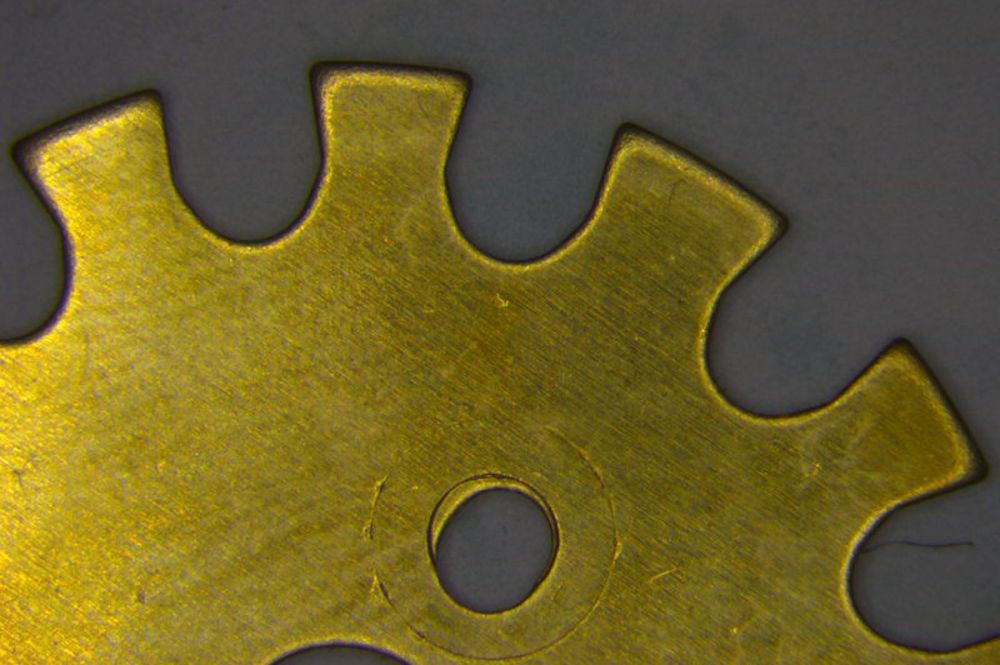
Bright, Uniform Illumination
Ring light illuminators are best suited for bright, uniform illumination.
Leica LED3000 RL, Leica LED5000 RL

High-Contrast Illumination
High-contrast illumination is offered by spotlight illuminators with moveable goosenecks for high flexibility. Fixed multi-contrast illuminators provide the same results, but their design makes the illumination settings reproducible.
Spotlight illuminators: Leica LED3000 SLI, Leica LED5000 SLI
Multi-contrast illuminators: Leica LED3000 MCI, Leica LED5000 MCI
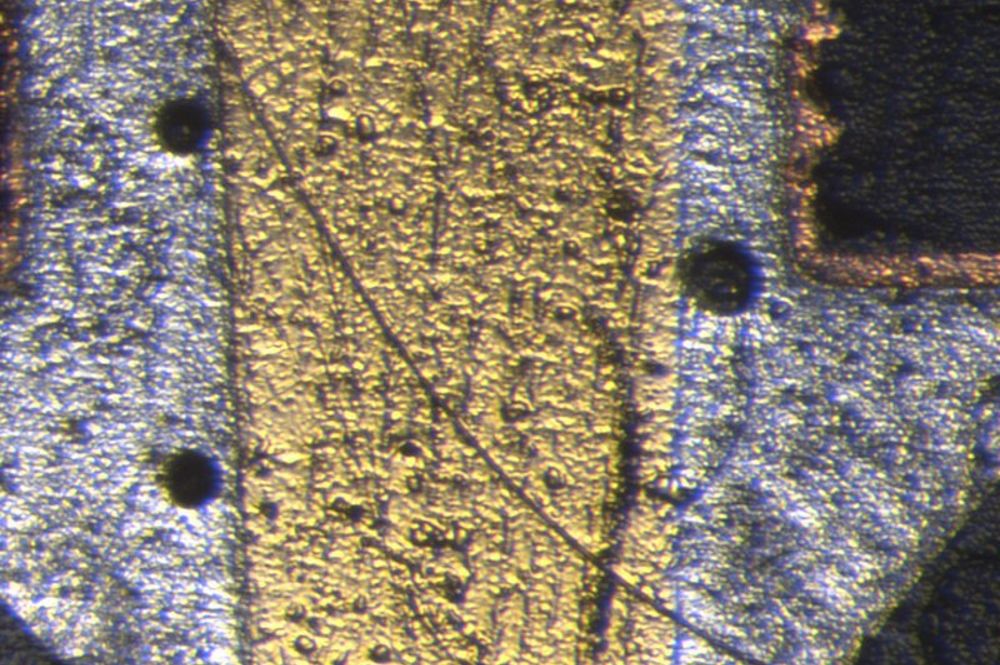
Coaxial Illumination
With coaxial illumination, the beam of light is guided through the optics and reflected on the sample. This requires the sample to be smooth and reflective. Coaxial illumination can be used with routine as well as high-performance stereo microscopes.

Diffuse Illumination
Shiny samples are often very difficult to document because they reflect light. Underexposed or overexposed areas are acquired by the digital microscope cameras and cannot be further evaluated, because there is no image information due to shadows or reflections. To solve this problem Leica Microsystems has developed diffuse illumination systems:
Leica LED5000 HDI and Leica LED3000 DI
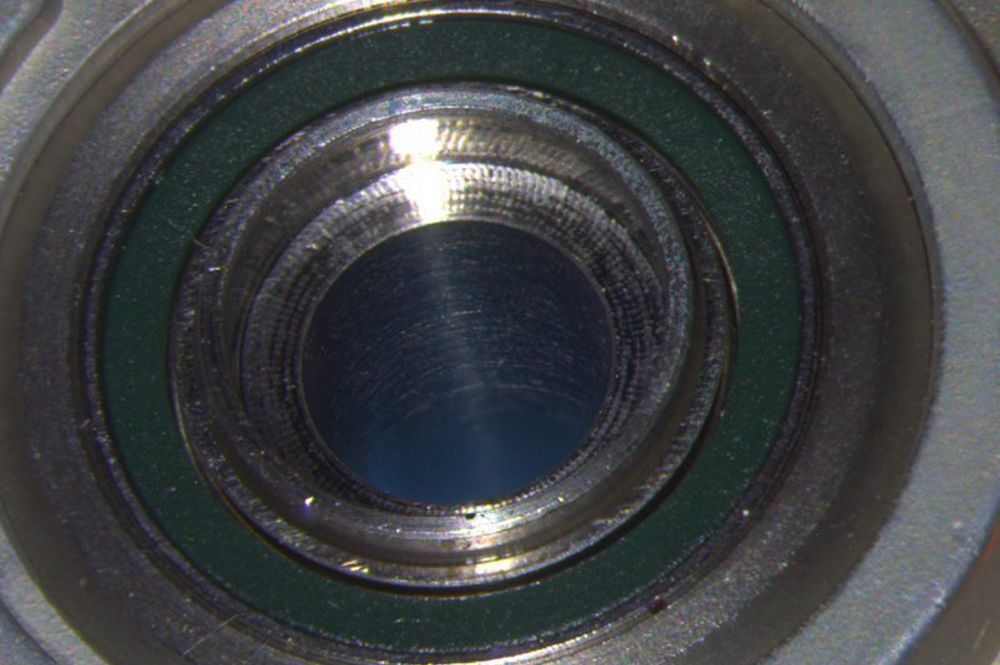
Nearly Shadow-free Illumination
Nearly shadow-free illumination is achieved using what is called the “near vertical illuminator.” Here, 2 LED spotlights are very close to the optical axis and shine on the sample.
Leica LED3000 NVI and Leica LED5000 NVI
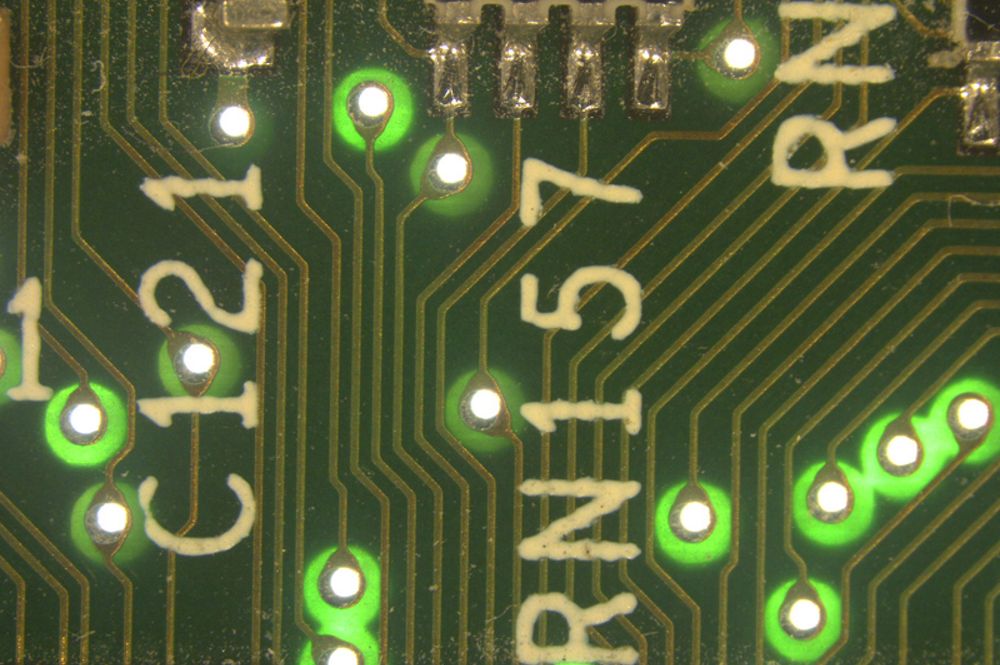
Transmitted Illumination
Transmitted illumination can be used to examine transparent samples quickly and easily. The large flat surface and the intuitive operating concept are suitable for simple tasks and ideally supplement existing incident illumination.
Leica LED3000 BLI
Available Models

Leica LED5000 NVI
The Leica LED5000 NVI is extremely high-performance thanks to its two integrated high-output LEDs. The light is generated nearly parallel to the microscope’s beam path and is thereby optimally aligned with the focal plane. This makes it particularly good for checking deep holes and bores.
The optional polarization set enables effective verification of high-gloss samples. The integrated filter insert makes it possible to adjust the light color to the user’s habits. This means the light characteristic of a halogen light source can be produced.
If you are working with a high-performance stereo microscope with high-magnification objectives (magnification of 1.6x or 2.0x), the illuminator provides excellent illumination at the smallest working distances.
Key Features
- Extremely high-performance LEDs: 2 high-output LEDs are extremely high-performance and effectively illuminate deep holes and bores. Perfectly for objectives with long working distances.
- Compact, well-integrated design: The integrated control element and compact design do not take up any more space on the work table.
- For high-performance stereo microscopes: For high-performance stereo microscopes, the Leica LED5000 NVI enables illumination of the specimen at very low working distances.
- Polarization set: With the optionally available polarization set, you can minimize reflections on metallic surfaces, which increases the efficiency during routine inspections.
- Efficient quality control: Excellent, high-performance illumination for standardized quality control processes.
- Highest modularity: The Leica LED5000 NVI can be combined with other illumination components and can be used flexibly.

Leica LED3000 DI
To document fissured samples with many corners, edges and recesses, you need a diffuse light source. Its light characteristic reduces shadows and does well at illuminating the digital images everywhere.
The diffuse illuminators of the LED illuminator series enable uniform illumination without bothersome shadow effects. They are particularly suited for documenting samples that are difficult to illuminate.
The illumination screen distributes light in all directions and produces a uniform light. Mounting it on a gooseneck gives you increased accessibility to the specimen. The flexible solution is ideally suited as a supplement for other illuminators and can simply be swung out of the way when not in use. The control element is mounted on a second gooseneck and can be easily positioned as the user desires.
Key Features
- Light characteristic: 36 high-output LEDs produce bright, uniform light.
- Flexible control element: The control element on the gooseneck can be positioned wherever it is needed – always at the right spot.
- Perfectly combinable: The modularity of the LED3000 DI means it can be easily and flexibly combined with other illuminators.
- Diffuse light: The bright, matte interior of the illumination screen ensures the greatest possible absence of shadows in the illumination – the best prerequisite for documenting quickly.

Leica LED3000 BLI for simple transmitted illumination
The Leica LED3000 BLI provides an easy option for equipping a microscope system with a transmitted light function. The 36 integrated LEDs produce sufficient brightness even for demanding tasks with transmitted light.
The built-in diffuser disk ensures high homogeneity of the light with a large object field diameter of 77 mm. The illumination can be combined with standard baseplates with a recess having a diameter of 120 millimeters and can be used as an independent instrument without a baseplate.
The intuitive touch panel makes the Leica LED3000 BLI extraordinarily easy to use. The large work surface of 170 mm x 220 mm also makes it possible to work easily with large samples.
Key Features
- Large surface: The large work surface of 170 mm x 220 mm also makes it possible to work easily with large samples.
- Independent use: The Leica LED3000 BLI can also be used without a baseplate.
- Intuitive operation: The touch panel makes it easy to operate the Leica LED3000 BLI.
- Rugged surface: The scratch-resistant glass surface even has no trouble withstanding the toughest applications in industrial areas.

Integrated LED Ring Light for Leica M-series Stereo MicroscopesLeica LED5000 RL
The Leica LED5000 RL, ring light illumination system with 40 bright LED’s provides homogeneous light distribution.
The illumination system allows true color reproduction of the specimen at all brightness levels without the yellow hue of halogen illumination and provides up to 50,000 hours of bright daylight quality, flicker free LED illumination, which is very comfortable for the eyes. No additional white balance is necessary.
Combined with Leica LAS software, the illumination becomes part of the automated system and illumination settings can be stored together with the image for easy reproducibility and higher throughput.
Key Features
- Daylight quality: Daylight quality, true color reproduction – 5600K color temperature allows the user to see structures in their true colors without the yellow hue of halogen illumination.
- LED illumination: LED illumination – provides up to 50,000 hours of continuous bright, daylight quality LED illumination, which is very comfortable for the eyes.
- Leica LAS software integration: Leica LAS software integration – LED illumination combines with Leica LAS software and allows all settings including the illumination to be stored together with the image for fast, easy reproducibility of parameters.
- 40 bright LED’s: 40 bright LED’s – homogenous light distribution divides into quarter or semi-circle segments for more detailed imaging.

Multi contrast illumination system with integrated arches for daylight quality Leica LED5000 MCI
The LED5000 SLI spotlight illuminator, with its flexible two-armed gooseneck and integrated LED spotlights, makes it easier for you to adjust the contrast for incident light.
This facilitates sorting tasks in the lab and quality control in production, which require different contrast. Steep LED position for low contrast and more uniform illumination, or flat LED position for stronger shading and contrast.
The newly-designed operating concept with separate gooseneck with integrated control unit simplifies operation and reduces the wiring to a minimum. The workstation is not cluttered with an additional control unit.
Key Features
- Flexible, two-armed gooseneck with integrated LED spotlights: Simple contrast adjustment for different specimens and applications.
- LED spotlights with removable diffusers: Less reflection for shiny workpieces makes work pleasant.
- Second Leica CAN bus: A second Leica LED illuminator, such as the LED5000 RL or CXI, can be connected directly to the LED5000 SLI.
- Operation via Leica Application Suite: Easy control of the LED spotlights via the Leica software provides additional comfort and convenience.
- 500 mm gooseneck length: Makes it ideal for high-performance stereomicroscopes such as the Leica M125, M165 C and M205 C.
- Newly-designed operating concept: Ergonomic positioning of the control unit. The wiring is reduced.

LED Spotlight Illuminator with Gooseneck Leica LED5000 SLI
The LED5000 SLI spotlight illuminator, with its flexible two-armed gooseneck and integrated LED spotlights, makes it easier for you to adjust the contrast for incident light.
This facilitates sorting tasks in the lab and quality control in production, which require different contrast. Steep LED position for low contrast and more uniform illumination, or flat LED position for stronger shading and contrast.
The newly-designed operating concept with separate gooseneck with integrated control unit simplifies operation and reduces the wiring to a minimum. The workstation is not cluttered with an additional control unit.
Key Features
- Flexible, two-armed gooseneck with integrated LED spotlights: Simple contrast adjustment for different specimens and applications.
- LED spotlights with removable diffusers: Less reflection for shiny workpieces makes work pleasant.
- Second Leica CAN bus: A second Leica LED illuminator, such as the LED5000 RL or CXI, can be connected directly to the LED5000 SLI.
- Operation via Leica Application Suite: Easy control of the LED spotlights via the Leica software provides additional comfort and convenience.
- 500 mm gooseneck length: Makes it ideal for high-performance stereomicroscopes such as the Leica M125, M165 C and M205 C.
- Newly-designed operating concept: Ergonomic positioning of the control unit. The wiring is reduced.

Coaxial Illumination System with integrated LED’s for observation of glossy surfaces Leica LED5000 CXI
The Leica LED5000 CXI™ coaxial illumination system allows true color reproduction of the specimen at all brightness levels without the yellow hue of halogen illumination and provides up to 50,000 hours of bright daylight quality, flicker free LED illumination, which is very comfortable for the eyes.
No additional white balance is necessary. 2 integrated LED’s eliminate the need for an external light source and therefore reduces required bench space. Combined with Leica LAS software, the illumination becomes part of the automated system and illumination settings can be stored together with the image for easy reproducibility and higher throughput.
Key Features
- Daylight quality: Daylight quality, true color reproduction – 6500K color temperature allows the user to see structures in their true colors without the yellow hue of halogen illumination.
- LED illumination: LED illumination – provides up to 50,000 hours of continuous bright, daylight quality LED illumination, which is very comfortable for the eyes.
- Leica LAS software integration: Leica LAS software integration – LED illumination combines with Leica LAS software and allows all settings including the illumination to be stored together with the image for fast, easy reproducibility of parameters.
- Reduces required bench space: 2 integrated LED’s eliminate the need for an external light source and therefore reduces required bench space.

High diffuse dome illumination Leica LED5000 HDI
The LED5000 HDI™ illuminator effectively blocks out ambient light and illuminates demanding surfaces with minimal reflections.
It is based on the concept of a dome illuminator and produces a very uniform light by means of the dome shape. The mechanically flexible design of the dome (Leica FlexiDome™) with silicone rubber eases your access to the specimen.
You save yourself a lot of time, since the specimen can be aligned in a focused state.
The highly diffuse, low-contrast illumination optimizes the dynamic range and therefore is excellently suited for critical image acquisitions such as LAS Montage or Leica StereoExplorer applications.
Key Features
- Leica FlexiDome™: Access to the specimen remains guaranteed even in a focused state. This eases repositioning of the specimen and saves a lot of time.
- Better and repeatable results: Optimization of the dynamic range often makes new information visible. This usually leads to improved results with digital image processing
- Highly diffuse illumination: The indirect, uniform light illuminates difficult surfaces with minimal reflections.

Compact LED Ring Illuminator for Uniform Illumination Leica LED3000 RL
The Leica LED3000 RL ring illuminator guarantees bright, uniform illumination of the specimen over a large object field at a constant color temperature. This is achieved by using the latest generation of LEDs, but above all by using the focusing lens specially developed by Leica.
The compact design makes for easier side access to the various specimen.
With the control of individual segments (half rings, quarter rings), you can achieve different contrasts and thereby gain additional information from your specimen.
Key Features
- Specially developed focusing lens: This extends the uniformly illuminated object field and provides a constant color temperature
- Diffuser and polarization set: These accessories reduce reflection (diffuser) or eliminate it (pol. set)
- Supports objectives with a 58 mm diameter: Can be used universally with different instruments within the optimized working distance of 60 to 150 mm
- Integration into Leica Application Suite: Illumination settings are saved with the image and can be recalled. (Store and recall module). Large time savings with recurring specimens.
- Compact design: Eases access to the specimen

LED Multi Contrast Illumination for Routine Stereo Microscopes Leica LED3000 MCI
The Leica LED3000 MCI™ for routine stereo microscopes provides unique multi contrast illumination to identify hard-to-find details on your samples or specimens.
Four LED spotlights are arranged in two arcs and induce different, repeatable contrast from 2 different directions and angles. Through this process the movable illuminator arcs can be adapted to different configurations.
Compared to the LED3000 SLI (spotlight illuminator), the LED3000 MCI is even more compact and the contrast adjustments are reproducible. This is advantageous if the same workpieces or specimens must be examined frequently.

LED Spotlight Illuminator with Gooseneck Leica LED3000 SLI
Spotlight illuminators are very useful for all kind of applications, where different contrast for reflected light is important.
The LED3000 SLI spotlight illuminator includes two integrated LED spotlights on flexible goosenecks, which makes these adjustments very fast and easy.
Oblique LED positions provide stronger shading and contrast sand highlights uneven surfaces. High-angle LED positions deliver lower contrast and more uniform illumination.
The operating concept with the integrated control unit on a separate gooseneck is unique. This simplifies the operation, reduces the wiring to a minimum and no additional control unit on the working table is needed.

Near vertical LED illumination system Leica LED3000 NVI
The Leica LED3000 NVI near vertical illumination system with 2 integrated LED’s in near vertical LED position increases brightness level and reduces shadows, which is ideal for inspection of holes or depressions.
The Leica LED3000 NVI provides up to 50,000 hours of bright daylight quality and allows true color reproduction of the specimen at all brightness levels without the need of additional white balance of your digital microscope camera.

Integrated LED Incident and Transmitted Illumination StandLeica LED2500
The high-quality and compact Leica LED2500 illumination system was developed for the Leica microscopes of the S series, M series and DMS series.
It combines the stand with a bright incident light and transmitted light; the segments can be controlled jointly or individually. The stand is easy to transport and takes up only a small amount of space.
The 4 predefined incident light scenarios produce different contrastsand enable fast and convenient operation. With the transmitted light there is not only uniform transmitted illumination over a large area, but also a targeted transmitted light function. This makes it possible to view structures with low contrast.
The built-in LEDs of the latest-generation have a high service life of up to 25,000 hours, which reduces the ongoing costs.

Integrated LED Incident Illumination Stand Provides High QualityLeica LED2000
The high-quality and compact Leica LED2000 illumination system was developed for the Leica microscopes of the S series, M seriesand DMS series. The innovative incident illuminator consists of a 4-point ring illuminator and another arc illuminator for additional contrast. The compact design means the stand is easy to transportand takes up only a small amount of space.
The versatile system has 4 preprogrammed illumination scenariosfor incident light, with which the contrast can be changed so that the correct setting is restored within a few seconds. The built-in LEDs of the latest generation have a high service life of up to 25,000 hours – which means you have low ongoing costs.

Compact System Provides High Quality Leica LED1000
The compact Leica LED1000 illumination system for Leica stereomicroscopes or macroscopes, provides up to 4000 hours of high quality, flicker free and ripple free LED illumination to the specimen.
Polarization filter, which eliminates reflections, and other filters are available for specific application requirements.
The highly flexible modular system provides ring light, spot light and transmitted light stages, as well as a universal 100-240V power supply.

LED cold light source for routine / lower magnification applications Leica KL300 LED
The Leica KL300 LED is an innovative fiber optic light source that uses cold light to illuminate all types of objects in industrial and life science applications.
The brightness is equivalent to a 50-Watt halogen lamp, which makes it an ideal illumination system for the requirements of routine stereo microscopes.
The Leica KL300 LED is a LED based light source offering the benefits such as low power consumption and long service life. Also, it can be connected to all of the accessories of the Leica L2 and KL200 LED routine cold light source product line. This offers the most modularity and flexibility to meet the most common illumination techniques.
Các lĩnh vực ứng dụng chính
- Sinh dược và công nghệ sinh học
- Dược phẩm
- Giáo dục
- Y khoa
- Máy móc & Sản xuất
More Products
Leica Microsystems develops and manufactures microscopes and scientific instruments for the analysis of microstructures and nanostructures. Widely recognized for optical…


